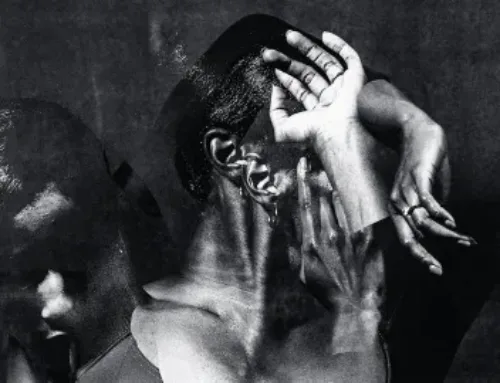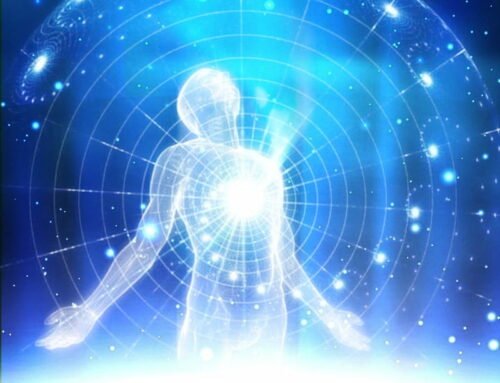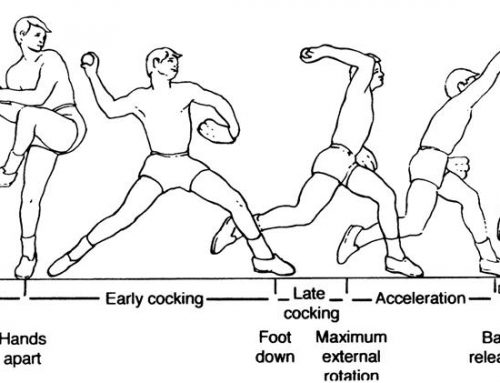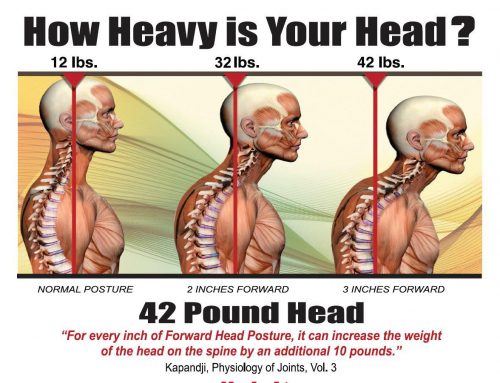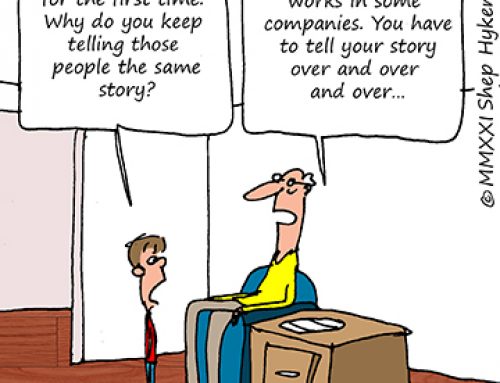According to NICE (National Institute for health and Care Excellence) FEB 2022:
Low back pain is common [Palmer et al, 2000; National Collaborating Centre for Primary Care, 2009; Campbell and Colvin, 2013]:
- Up to 60% of the adult population can expect to have low back pain at some time in their life.
- A UK population-based cross-sectional study of 15,272 people aged 25 years and older found the 1-month period prevalence of low back pain to be 28.5%, peaking at age 41–50 years. Low back pain was reported by one in four people aged over 80 years [Macfarlane et al, 2012].
- Around 20% of people with low back pain consult their GP each year.
- 3-4% of young adults (below 45 years of age) are chronically disabled by low back pain.
- 5-7% of older adults (over 45 years of age) are chronically disabled by low back pain.
Clients come to me with some results from treatments for lower back pain, others come with little or no results. Yet most have spent a lot of time, money and effort seeking out all sorts of specialists in many different fields to no avail. You will hear me say this: “If what you are doing is working, why are you calling me now?” The problem is we never look at the root cause but only the symptoms.
Are we looking in the wrong place?
“You can cut open the dancer, but will never find the dance”– Paul Chek
This is because you cannot separate the mind and body. The body works holistically. When someone books in for a back-rehabilitation program with me, they are given the choice of treating symptoms or the root cause. The root cause requires an in depth look at lifestyle and belief system.
Many clients initially tell me that they only want the exercises or moves to rehabilitate and that nothing else matters. This is because we are taught that everything must and has to be measured. I am forever hearing clients say: “Follow the science!” My answer to them is this: “Do you love your partner, family or animals. They reply “Yes”, and I follow up with the question: “How do you measure that love for them?”
Of course, love cannot be measured. This is just something which is unexplainable.
There are countless research papers about how being connected to nature is where and when we are most healthy and likely to heal. This is why I have a large number of plants in each studio, plus we maximise the natural daylight in the studio. When we are in line with nature, we are in line with our intuition.
The question becomes: “Is it the ego we listen to or our intuition?”
So firstly there is no such thing as a bad exercise or movement, but there is such thing as a badly prescribed exercise or movement. A CHEK assessment leaves no stone unturned. It will give you strength, mobilizations and corrective exercise to help you reach your back pain goals. It will also look at your nutrition, sleep, hydration, belief system and breath pattern.
Sitting is so bad for our backs, yet society puts us into this position every day. Right from when we wake to when we sleep. When we feel pain in our back, the body is telling us what movements we can do and what movements we cannot do. While pain killers improve our comfort, they do nothing to treat root cause.
Discs have little blood supply and take time to heal – they are mainly water. So the foundation principle of drinking good clean water is essential. The pain teacher at a subconscious level is telling the conscious mind that something needs to change, and that area needs more love and attention.
We always learn more in life than we do through pleasure. The book ‘The hero’s journey’ comes into place. We learn through the pain, learn to overcome to the pain and then teach other people how to overcome their pain.
Questions I will ask you:
1. How will you be different without the back pain?
2. How will this help you achieve your goal and dreams?
3. What is a pain free body going to give you?
4. Who will this impact when you are at your best?
5. What and who will this impact if you do not get rid of your back pain?
If we focus purely on the symptoms, the client just ends up on the pain roundabout. But having a goal, dream and legacy helps the client to keep the focus on what they can and will be.
As the famous psychiatrist Gerry Welsch says: “When you have a big enough dream, you don’t have a crisis.”
When we live in fight or flight, fear and victim mode we catastrophise. I hear over and over again: “This is in my genes, all my family have bad backs, I’ve been diagnosed, there is no hope. I am not going to get any better”. The problem is words are so powerful. They actually send a message from the brain down through the spinal cord telling the body that it will not heal. This blocks the inhibition of pain and the discs or problem may heal, but the pain remains the same. The body is still sending those same sympathetic stressful nerve impulses.
Is it that simple??? Of course not . This is where central sensitisation comes in. So there are many inputs to pain and all pain is multi factorial. For example continuing to eat foods that causes inflammation will keep the body in pain. My understanding of Panjabi’s 1992 model of spinal stability and mobility working with subsystems. “The ability of both stability and mobility systems to work in harmony will subsequently determine the quality of movement. Conversely, malfunction of either system, or their subsystems, will deleteriously affect all other subsystems and consequently overall movement quality. For this reason, in the rehabilitation exercise environment, focus should be placed on the simultaneous involvement of both the stability and mobility systems.” PMID: 23561576
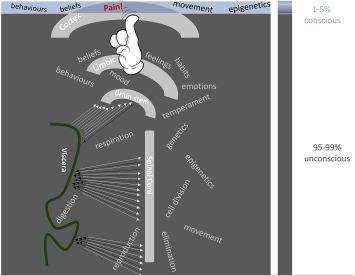
As you can see form the diagram, we cannot ignore the neural control, this is everything, if not more.
Bruce Lipton’s ”Biology of Belief” reminds us that our first seven years of life is delta and theta waves of the brain which is a hypnotic state. When it comes to child development, it’s been said that the most crucial milestones in a kid’s life occur by the age of 7. In fact, the great Greek philosopher Aristotle once said, “Give me a child until he is 7 and I will show you the man.” So whatever environment you are in, your subconscious mind absorbs it. Delta in adult is deep sleep. Theta in an adult is rapid eye movement (so dreaming, going off to sleep or waking). As we get older, we can question everything and become critical thinkers. Sadly this is commonly mistaken for radical thinking.
When we have often been in pain as children we have of course been nurtured and loved. As we develop into adulthood if we do not have enough love for the self our unconscious behaviours can drive us into illness and pain. My experience with many chronic pain clients is that the first few months are the easiest, but then the subconscious mind will kick in and rule the behaviour and they return to where they started.
An example of how strong our subconscious mind is – we’ve all, at some point in our lives, driven to a destination but haven’t remembered driving there. Our subconscious mind has done all the work and remembered the learnt behaviour of safe driving. We all have automatic reactions to certain behaviours and if we are not careful, we just repeat.
Unless we are willing to look at any sort of pain at the subconscious level, we will repeat the same behaviour, which is utter madness. We can override this by many right brain activities (e.g., art and dance) but firstly, one must have a keen sense of awareness of the present.
If you have not made many mistakes in your life, you have not learnt!
Bibliography
Matt Wallden – PMID: 29861247
Gabor Mate
‘The biology of belief’- Bruce Lipton
Leigh Brandon podcast – https://acoffeewithkaren.podbean.com/e/episode-79-why-most-lower-back-pain-has-no-known-cause/
Paul Chek podcasts
1. https://cks.nice.org.uk/topics/back-pain-low-without-radiculopathy/background-information/prevalance


